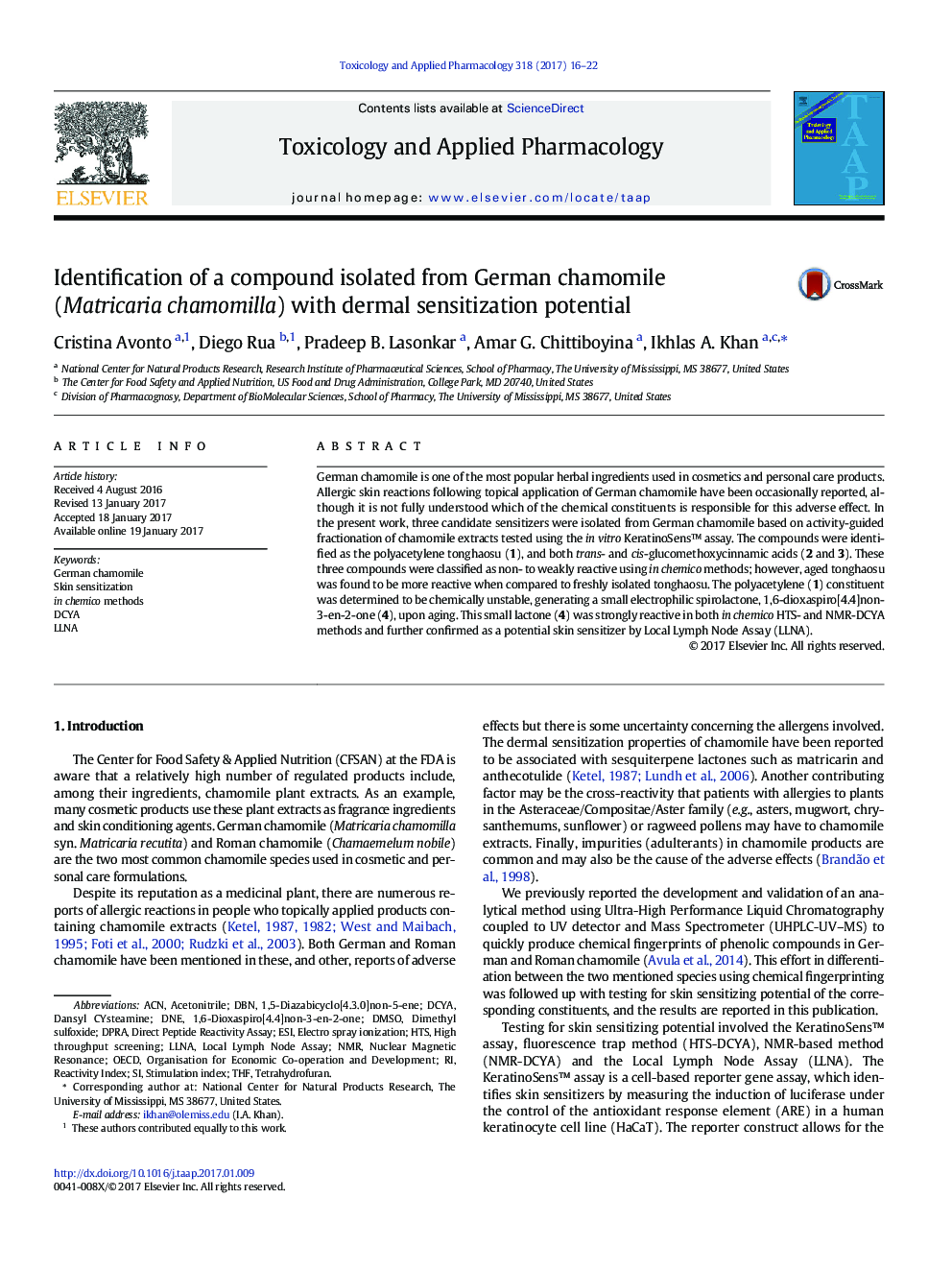| Article ID | Journal | Published Year | Pages | File Type |
|---|---|---|---|---|
| 5558621 | Toxicology and Applied Pharmacology | 2017 | 7 Pages |
â¢Fractions of German chamomile tested positive in the KeratinoSens⢠assay.â¢Three compounds containing structural alerts were isolated and tested with in chemico methods.â¢The polyacetylene tonghaosu was found to be unstable and categorized as potential pre-hapten.â¢A degradation product of tonghaosu tested as positive dermal sensitizer in animal studies.
German chamomile is one of the most popular herbal ingredients used in cosmetics and personal care products. Allergic skin reactions following topical application of German chamomile have been occasionally reported, although it is not fully understood which of the chemical constituents is responsible for this adverse effect. In the present work, three candidate sensitizers were isolated from German chamomile based on activity-guided fractionation of chamomile extracts tested using the in vitro KeratinoSens⢠assay. The compounds were identified as the polyacetylene tonghaosu (1), and both trans- and cis-glucomethoxycinnamic acids (2 and 3). These three compounds were classified as non- to weakly reactive using in chemico methods; however, aged tonghaosu was found to be more reactive when compared to freshly isolated tonghaosu. The polyacetylene (1) constituent was determined to be chemically unstable, generating a small electrophilic spirolactone, 1,6-dioxaspiro[4.4]non-3-en-2-one (4), upon aging. This small lactone (4) was strongly reactive in both in chemico HTS- and NMR-DCYA methods and further confirmed as a potential skin sensitizer by Local Lymph Node Assay (LLNA).
